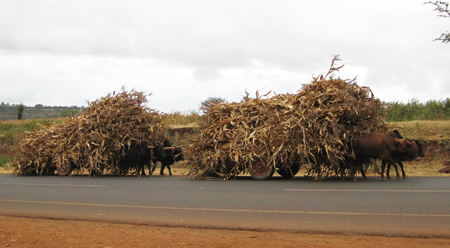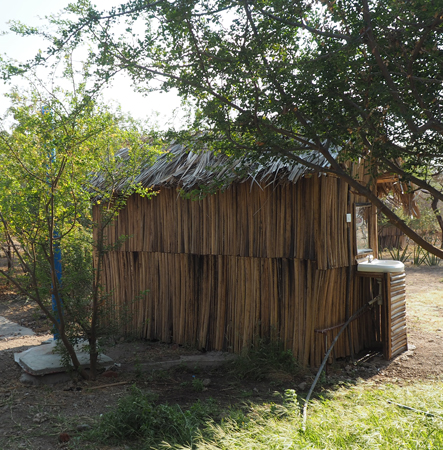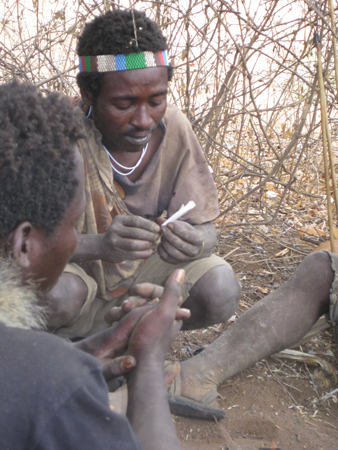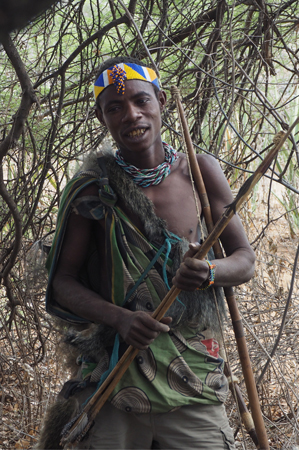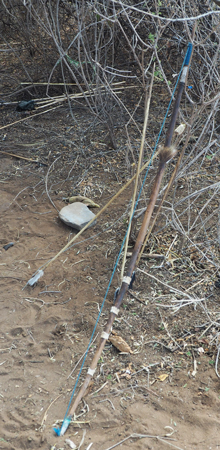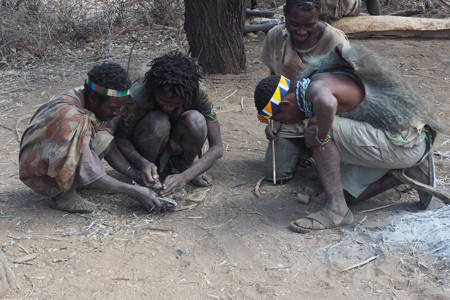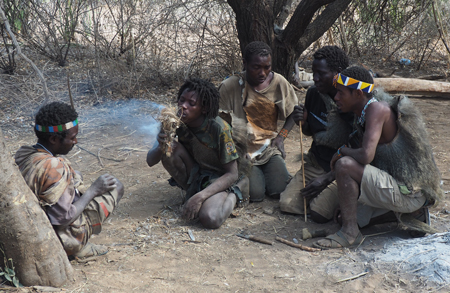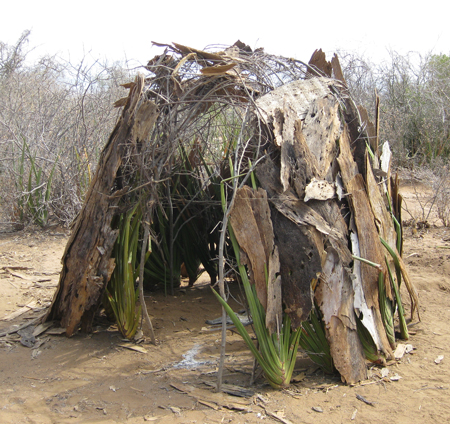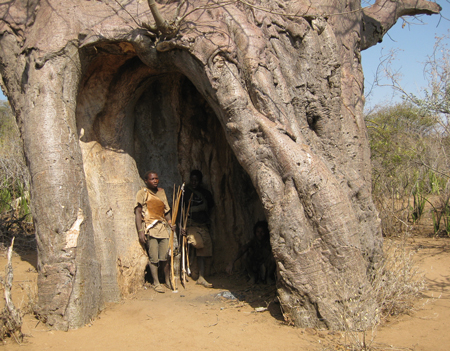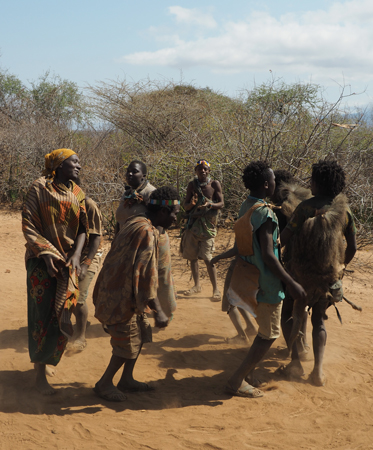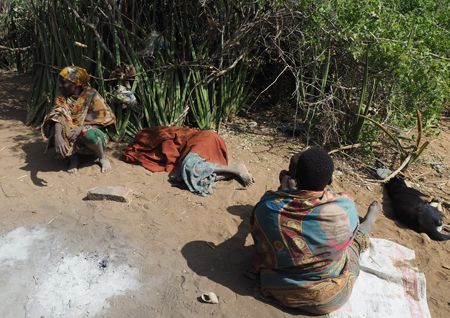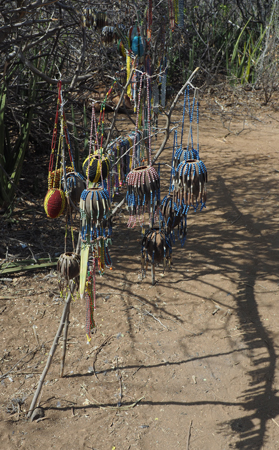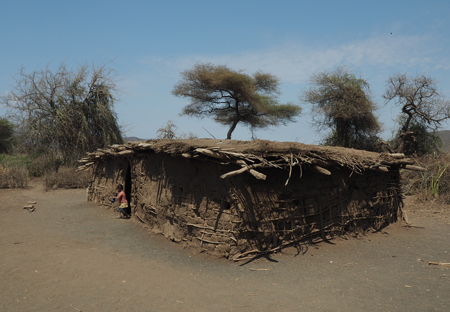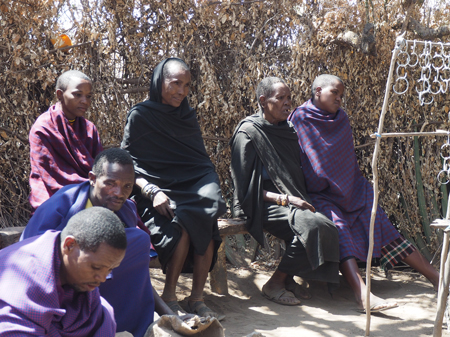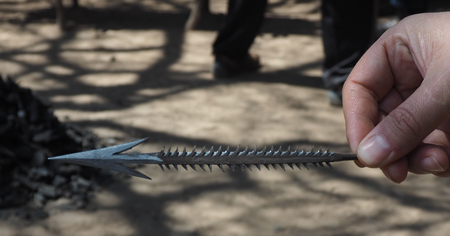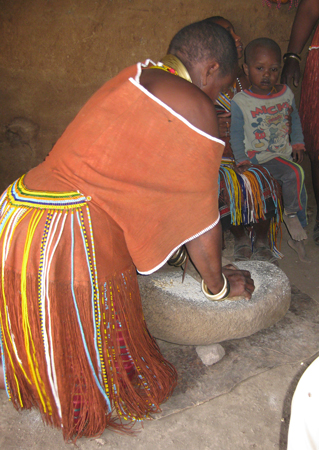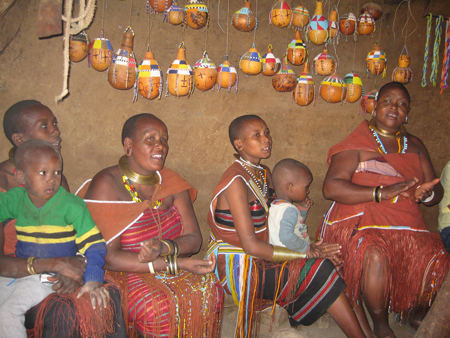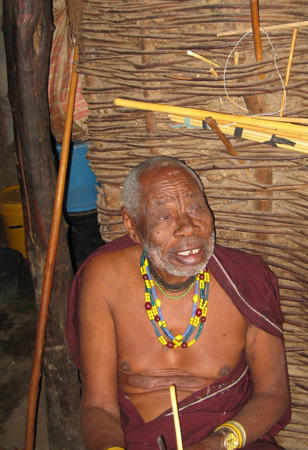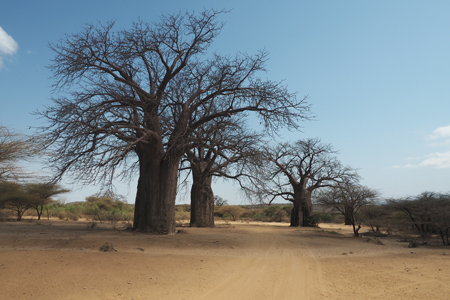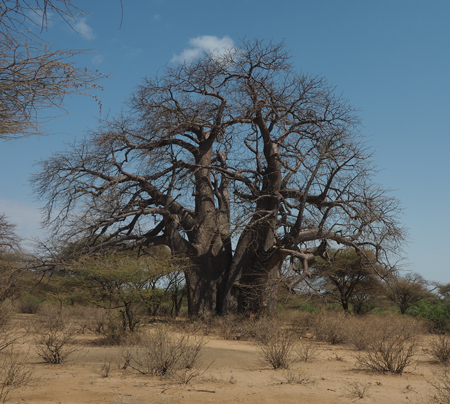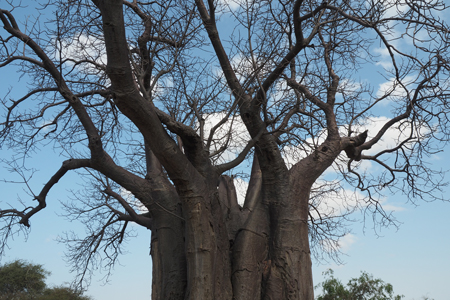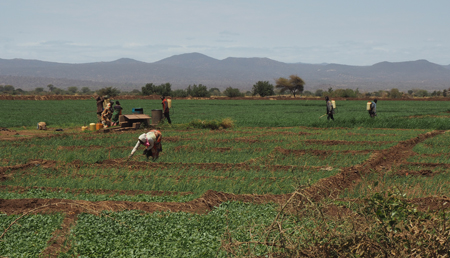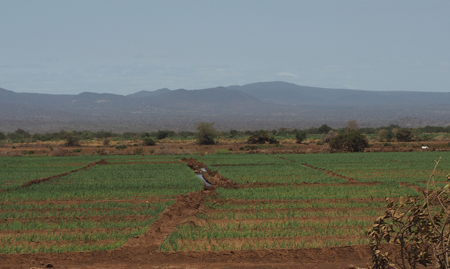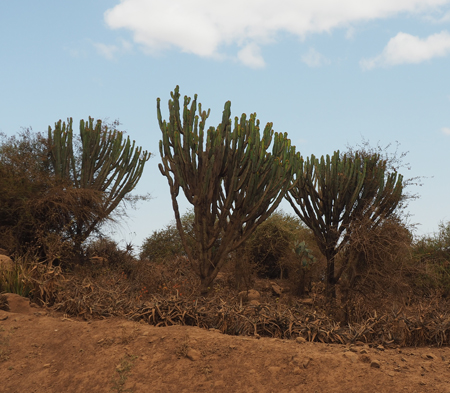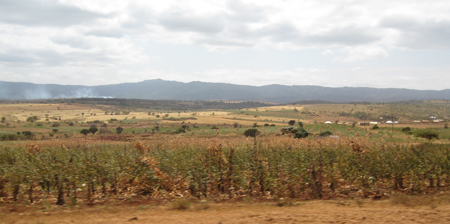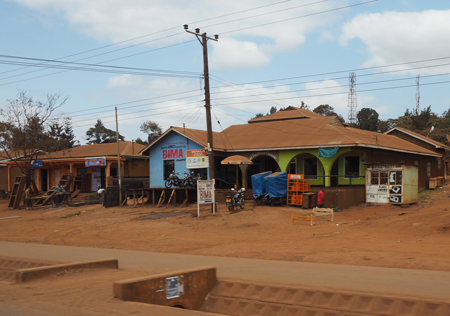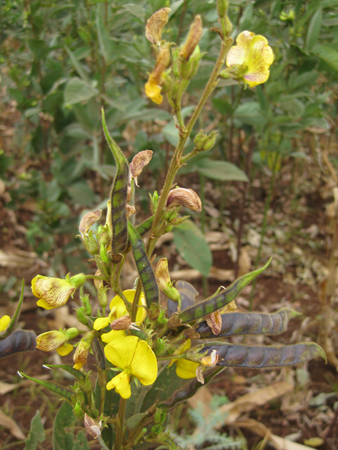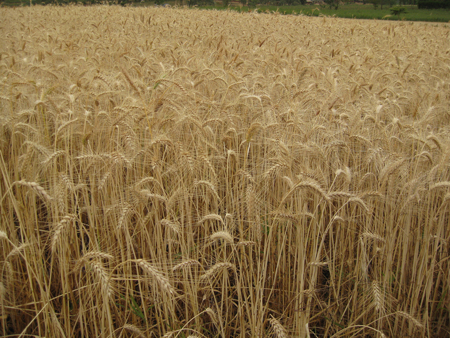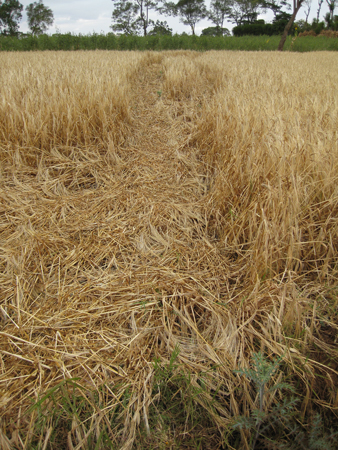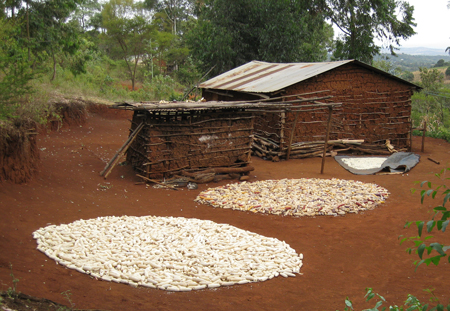Sat., 8/12/2017 – Karatu
Today we drove through rolling farm fields with landscape not unlike Tuscany in Italy, except for the trees that were acacia, euforbia candelabra, and agave and the brick structures (houses) with thatch or corrugated metal roofs. On the road we saw more ox and donkey carts than cars.
We visited three “tribes” of local people.
The first, and most unique, was a group of real bushmen. The Hadzabe are true hunter-gatherer nomads. The men are permitted to kill and eat wild animals. To do this they use bows and arrows that they have made. The women gather local plants for food or medicine. They have no permanent structures and move when the animals do. In the rainy season they stay in hollowed out Baobab trees or in caves. They speak a “click” language and came originally from the Congo. Five hundred of the 1300 of their tribe live here in Tanzania. They find water in the dry season in hollows in the top of Baobab trees or by digging in the sand of a dry riverbed like the elephants that we saw the other day. They don’t use water for washing themselves.
We joined a clan leader at a men’s area while the women gathered elsewhere. Four other men sitting around a small fire were rolling and smoking marijuana. They grow it in the wet season. It is illegal but the government ignores most of their illegal activities because they have been doing those things for a thousand years. The leader showed us the bow and arrows he uses for hunting. They knock birds out of trees using a corncob on the arrow tip. They kill baboons using a double barbed arrow so the baboon can’t pull the arrow out and run away. They use a poison tipped arrow for larger animals like impalas. The poison depresses the nervous system so they fall and can be killed with a knife.
We walked past some women, looked at a “structure” the men slept in, and walked to a hollow Baobab tree they could use if it rained.
Their marriage arrangement is unique. When a wife is tired of a “husband” or he doesn’t supply enough meat, she can swap him for a different man. The dowry of the woman is a baboon or honey. They collect honey from beehives in Baobab trees.
The men were wearing old T-shirts and shorts and wrapped a skin, probably baboon, around their waist. They have no intention of changing the way they live but the government insists they be clothed if they are going to meet tourists which this group does to make money for things like metal arrow tips. They also trade honey for some things.
| Return to Top | Return to Itinerary | Return to Trips page to view other trips | Return to Dreamcatcher Home Page |
